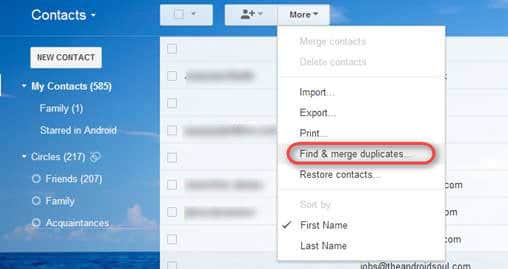1. Clean Up (and Segment) your ACT!
E-mail to your existing clients and prospects is the least expensive and most productive on-line marketing activity. For less than $0.03 per delivered e-mail, you can get a quickly remind a customer or prospective customer about a hot new product, a new business initiative, a recent PR story or simply to share an interesting article from a business publication.
As Woody Allen once remarked, 80% of success in life is merely showing up! Send that e-mail today.
2. …And Check To Be Sure Your Mail Was Received
Everyone has a sent mail folder but how often do you check what happened to that e-mail (or vital e-mail solicitation) you sent last week. Too often we get consumed with the critical, must-respond tasks that we ignore or forget that we sent a few e-mails that never got a reply. Why? If no one responded, call a few friendlies on the list. Reach out. Be warm and think of something to say.
3. Write up expert commentary on a topical issue.
Blog is a fancy name for a commentary on a current issue. Millions already do, which speaks equally about the popularity of the technology as well as the problem of being oversaturated. If you do decide to start a blog, the best advice is…don’t stop. Keep a pace of two to three posts per week. Be brief, be brilliant and be gone! If you can’t do all three, hire a professional writer to write for you. Comment on industry trends, wax about business issues, help clients save money. Think about ideas and notions that keep your customers thinking about you.
To help get started, check out this recent article on blogging.
4. Renovate/update your website…or create one (if you don’t have one).
In the old days (five years ago), creating even a small but decent looking website cost money to hire designers and programmers. Today web publishing tools are free, thanks to content management systems (CMS) like WordPress, Joomla and Drupal. While not quite as easy as firing up a Word processor, web publishing today is much easier, to the entry barriers are lower.
A perfectly credible website can be had for less than $3,000 including graphics and programming. Content providers (a 21st century term for copywriter) can be had for $1 a word .
5. Upgrade your web marketing strategy
While the entry barriers to creating a website have gone down, what has increased is the importance of search engine ranking. It is not a sufficient marketing strategy to create a nice looking website. You must consider driving traffic to that site and then set and measure, specific performance goals.
If you sell products via the web, performance goals are relatively simple to understand. One primary goal is sales, and the performance goal is to either increase the average revenue per transaction or reduce the cost of customer acquisition.
However, if your business is not set up for on-line sales, you should still create and drive performance goals. Every site should carefully watch metrics such as unique visitors, average page views, bounce rates and keywords. These are basic metrics that determine your site’s popularity, focus and quality. Goals could be simply to improve traffic (unique visitors), improve search engine results (keywords that describe your business with or without using its name), and content quality (average page views and bounce rates).
Here’s an excellent primer on setting and measuring web goals.
6. Credit Monitoring in Reverse: Call big customers who have not ordered lately.
A customer may or may not owe you money, but subtle shifts in buying or call patterns can presage big changes in behavior down the road.
Customers who are happy, ordering regularly don’t typically attract much attention. Things are running smoothly. But what about customers who haven’t ordered regularly. We recently conducted a study for a B2B e-commerce company. Many of our clients’ customers would reorder at regular intervals, generally once per week to once per quarter. However, more 60% of those regular customers had not ordered in more than six months! What happened? No one knew because no one was watching.
It is important to keep up relations with your current customers but it is even more important to monitor order patterns to detect…and prevent customer defections, unresolved issues or competitive overtures. Start today by looking at simple average order patterns. You can get fancy by looking at order size or historic patterns, either by individual customer or by customer’s market. The point is: don’t get blindsided by smoldering problems and passive aggressive customer behavior.



